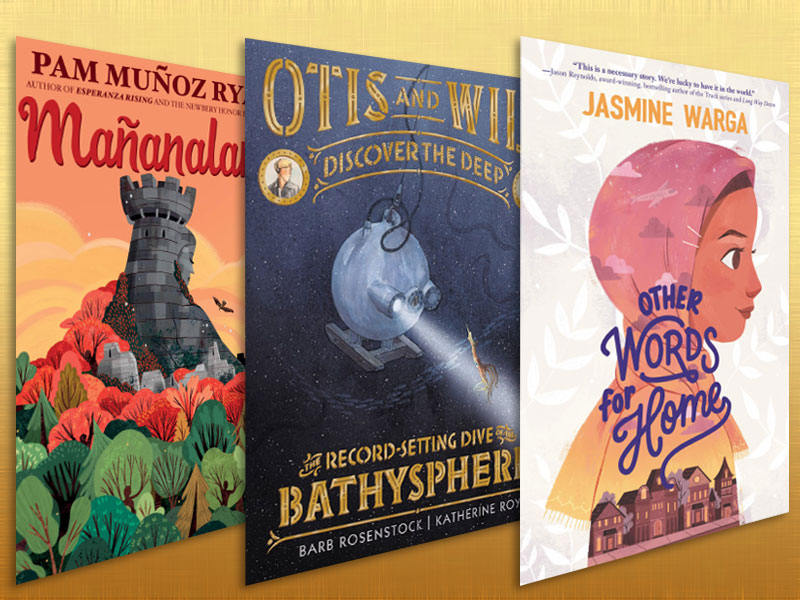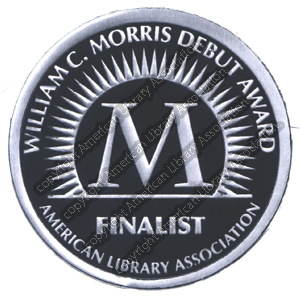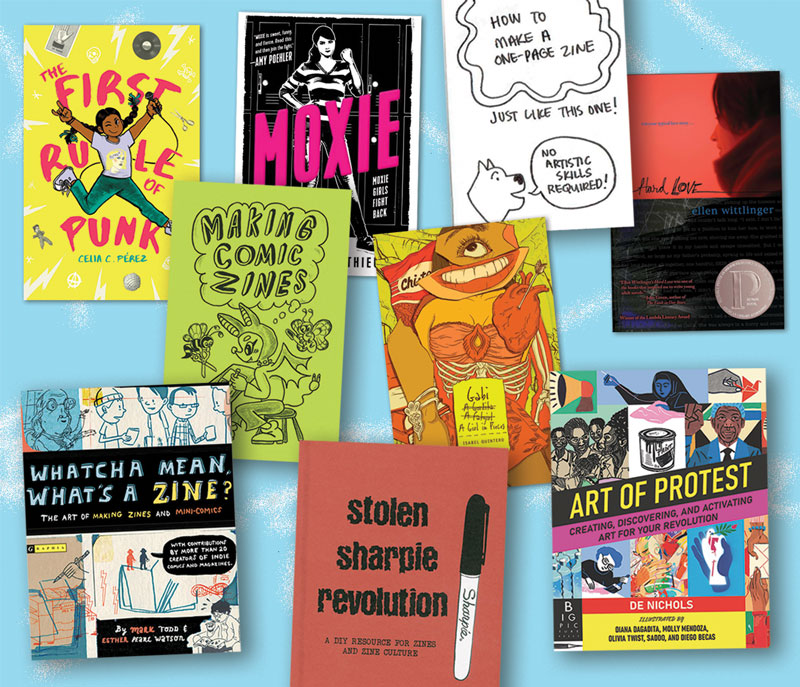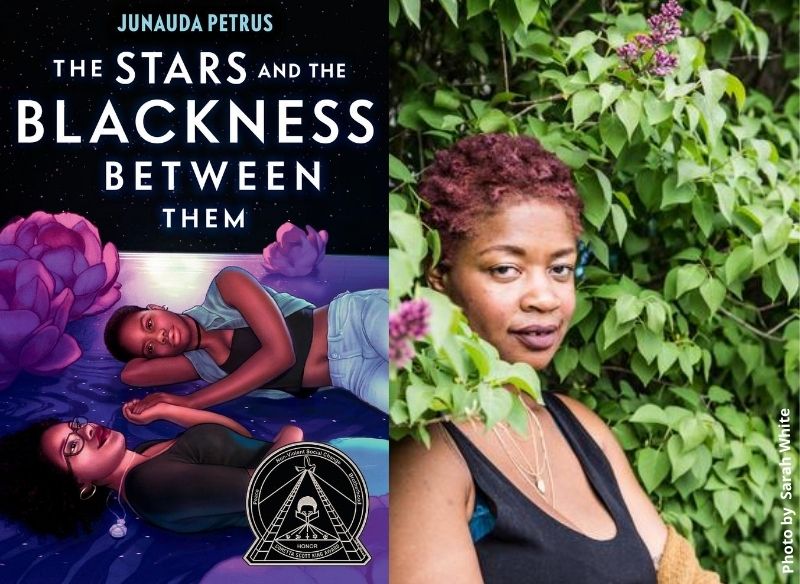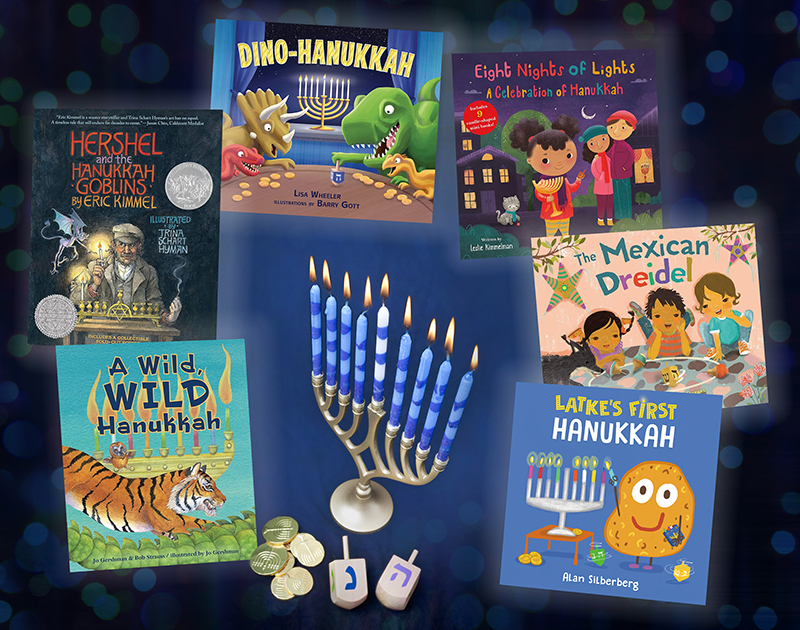Can We Help?: Kids Volunteering to Help Their Communities
Can We Help?: Kids Volunteering to Help Their Communities
Written and Photographed by George Ancona
Published in 2015 by Candlewick Press
ISBN: 978-0-7636-7367-3
Grades K-8
Book Review
George Ancona’s most recent photo essay provides a welcome counterpoint to the onslaught of troubling news we encounter daily. Focusing on neighborhoods in Santa Fe, New Mexico, this accomplished photographer tells the stories of children engaged in community service efforts. The answer to his title question is decisively “yes” – kids can help and kids can make a difference. Ancona’s accessible text describes organizations ranging from community gardens to service dog training to adaptive ski programs, each featured in sections that span several pages. But it is the photographs that truly tell the story here. Artfully placed, compelling images capture the joy and playfulness of young people as they knit hats, harvest vegetables, pack snacks, deliver meals, teach dogs commands, push bi-skis, water saplings, and pick up litter. A celebration of the human impulse to reach out to others, this book will invite you and your students to get out there and volunteer.
Teaching Ideas: Invitations for Your Classroom
What Does it Mean to Help? Prior to reading Can We Help?, engage your students in a discussion of what it means to help. Record their responses on chart paper, encouraging them to provide many examples. Then read the introductory sentences to Can We Help?aloud. “Can we help?/ Of course you can!? You can help your family, an neighbor, or even someone you don’t know.” Revisit the students’ examples of helping and sort their responses into categories – helping family, neighbors, community neighbors, and national and global initiatives. Following a full reading of the text, invite students to add to their listing. Then ask them to select a way in which they do or plan to help others or their environment and write and illustrate about their efforts. Share their work with family and school community members so they have lots of support to continue or to implement their efforts.
Getting to Know People Who Help. Invite a series of guest speakers into your classroom, featuring community members who serve ‘helping roles’ in your community. Students should prepare for each speaker by developing interview questions that will support their understanding of what the speaker does. Photograph each speaker and work with students to create a written description of what you learn. Bind these into a class big book of community helpers or create a bulletin board display.
Finding out More. Divide your students up into small groups – use the weblinks below (in the Further Explorations section) as a starting point for researching organizations like the ones featured in the book. Then, branch out, investigating whether similar organizations exist in your community. Groups should prepare presentations for their classmates to share their findings about these organizations, the work that they do, and how kids might get involved.
Duet Model Reading. Pair Ancona’s photo essay along with Leo and Diane Dillon’s inspirational picture book If Kids Ran the World in a Duet Model reading (see our teaching with text sets entry). Because the Dillon’s book is speculative, it might serve as an introduction to the real world examples of child helpers provided in Can We Help? Alternatively, if read as a follow up to Ancona’s book, If Kids Ran the World can help broaden the picture, focusing on global needs and goals. The Dillons include in their final double page spread an image of children carrying banners that reflect President Franklin Delanor Roosevelt’s “four essential human freedoms.” Older students make be able to describe how the service efforts described by Ancona support these freedoms.
Examining Expository Text.After an initial reading and discussion, guide students through a close reading of the text with a focus on text organization and structure. Together, notice how Ancona’s text is patterned, creating sections. First, he describes a need and an organization that works to fill that need. Next, he describes children participating in the efforts. Guide students to notice how Ancona effectively sets the context and then clearly describes the action – what child and adult volunteers are doing in that setting. Use Ancona’s concise, yet descriptive expository text as a model for students’ own writing.
Author Study. “I like to think of the cover of my books as doors to other worlds. The people I meet share their stories with me as I take their pictures. And this is what I share with the kids that open my books.” Use this quote from the back dust jacket to launch a study of Ancona’s work. Gather a collection of Ancona’s book (including It’s Our Garden: From Seeds to Harvest in a School Garden, which we featured in a Classroom Bookshelf entry). Ask your students to identify patterns in setting, theme, character, and plot across the books. Discuss his values, commitments and advocacy efforts. Consider how Ancona’s biography has influenced his work. Closely study his photographs – can students identify patterns in photo composition, perspective/ point of view, and layouts?
Kids Who Make a Difference: Text Set. Gather together a collection of books that feature children who make a difference in big and small ways. Decide whether the texts will all be nonfiction, such as The Boy Who Harnessed the Wind and Malala: A Brave Girl from Pakistan/Iqbal: A Brave Boy from Pakistan or whether you will also include fictional titles, such as Gabby and Grandma Go Green. As you read the books, use a graphic organizer to record: who the character is (name / country of origin); what challenge or problem the character is trying to solve; and the action steps taken by the character (what he/she is doing to help). Following this text set study, invite your students to identify and celebrate children’s efforts to help within your school and local community.
Genre Study: Photo Essay. As with his previous works, George Ancona has created a beautifully crafted photo essay in which the author’s clearly written text is accompanied by enagaing photographs that play an equal role in conveying the story of these children’s service efforts. Read Can We Help? along with other well crafted photo essays such as those featured in our blog: George Ancona’s It’s Our Garden: From Seeds to Harvest in a School Garden, Loree Griffin Burns and Ellen Harasimowicz’s Handle with Care: An Unusual Butterfly Journey, April Pulley Sayre’s Rah, Rah Radishes! A Vegetable Chant, and Sy Montgomery and Nic Bishop’s Kakapo Rescue: Saving the World’s Strangest Parrot. Discuss the relationship between the photographs and the text on double page spreads, as well as aspects of the book’s layout and design, such as placement of the photographs, the use of white space, borders, and captions. Discuss, too, the inquiry processes used by authors and photographs to craft a photo essay. Photo essays often (although not always) involve first hand research and documentation. Using the photo essays you have studied as mentor texts, invite your students to plan, research, document, and craft a photo essay featuring your school or community.
Service Learning. The Service Learning movement is gaining ground in K-12 settings. If your school / district has not already implemented service learning, use the resources below to learn more about the academic and social/emotional benefits of engaging students in community service. Consider launching a service learning project with your students.
Critical Literacy
Photography as Social Action. The medium of photography can be a powerful advocacy tool for social change. The photographs in Can We Help? offer positive images of children engaged in community service. Provide other examples of collections of photographs that are a critique of society or a call for action, such as Dorothea Lange’s photographs of migrant families taken during the Great Depression or her documentation of the Japanese Internment Camps (http://www.oac.cdlib.org/view?docId=ft3f59n5wt;query=dorothea%20lange;style=oac4;view=admin#hitNum9), Lewis Hine’s photographic protests against child labor (http://www.historyplace.com/unitedstates/childlabor/), or Gary Braasch’s photgraphs of the BP oil spill for a contemporary example. (http://www.worldviewofglobalwarming.org/gulfoil/intro.html), and ask your students to describe the emotions that the photographs evoke in them. Work with your students to identify a concern or problem in their local community and invite students to create a collection of photographs that raise awareness of the issue.
Further Explorations
Online Resources:
Reading Rockets Interview with George Ancona
Kitchen Angels
Santa Fe Community Farm
Assistance Dogs of the West
Adaptive Ski Program
Pueblo of Pojaque Boys and Girls Club
FDR and the Four Freedoms Speech
Service Learning: Benefits
Corporation for National and Community Service
Gloria Barron Prize for Young Heroes
Books:
Ancona, G. (2013). It’s our garden: From seeds to harvest in a school garden. Somerville, MA: Candlewick Press.
Burns, L.G. & Harasimowicz , E. (2014). Handle with care: An unusual butterfly journey. Minneapolis, MN: Millbrook Press.
Dillon, L. & Dillon, D. (2014). If kids ran the world. New York: The Blue Sky Press.
Montgomery, S. & Bishop, N. (2010). Kakapo rescue: Saving the world’s strangest parrot. Boston: Houghton Mifflin.
de la Pena, Matt (2015). Last stop on Market Street. Illustrated by Christina Robinson. New York: G.P. Putnam’s and Sons.
Kamkwaba, W & Mealer, B. (2012). The boy who harnessed the wind. Ill. by E. Zunon. New York: Dial.
Sayre, A.P. (2011). Rah, rah, radishes!: A vegetable chant. New York: Beach Lane Books.
The Earth Works Group. (2008). The new 50 simple things kids can do to save the earth. Ill. by M. Montez & L. Bodger. Kansas City: Andrews McMeel Publishers.
Walsh, M. (2008). Ten things I can do to help my world. Cambridge, MA: Candlewick Press.
Winter, J. (2014). Malala: A brave girl from Pakistan/Iqbal: A brave boy from Pakistan. New York: Beach Lane Books.
Wellington, M. (2011). Gabby and Grandma go green. New York: Dutton Children’s Book.
Filed under: Nonfiction
About Erika Thulin Dawes
Erika is a professor of language and literacy at Lesley University. A former classroom teacher, reading specialist, and literacy supervisor, she now teaches courses in children’s literature, early literacy, and literacy methods. Erika is the co-author of Learning to Write with Purpose, Teaching with Text Sets, and Teaching to Complexity.
ADVERTISEMENT
ADVERTISEMENT
SLJ Blog Network
100 Scope Notes
Name That LEGO Book Cover! (#53)
A Fuse #8 Production
Cover Reveal and Q&A: The One and Only Googoosh with Azadeh Westergaard
Good Comics for Kids
K is in Trouble | Review
Politics in Practice
Fighting Public School Book Bans with the Civil Rights Act
ADVERTISEMENT



